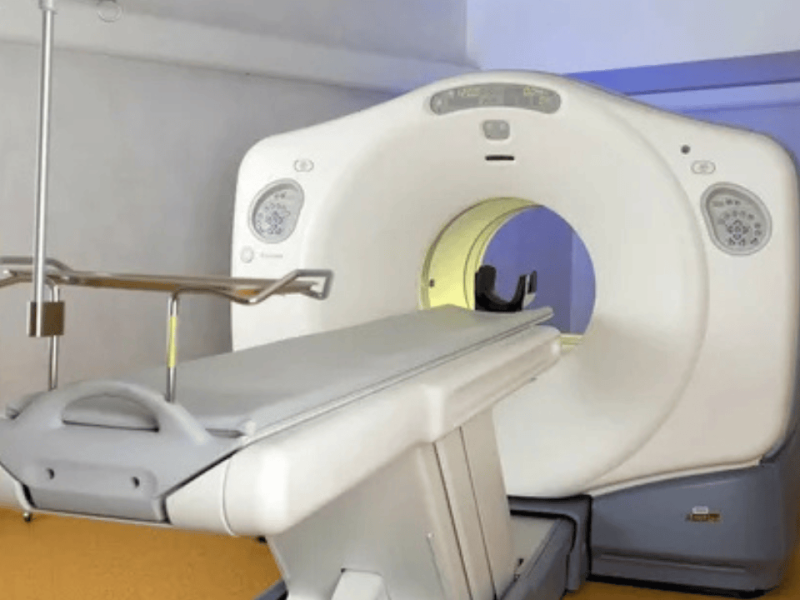Introduction: Understanding How PET Scan Works for Beginners
Have you ever wondered how PET scan works inside our body? Whether you are a school student or an adult, understanding this modern medical test is both fascinating and useful. A PET scan, or Positron Emission Tomography scan, is not just a picture of your body. It shows the real-time working of your organs, like how the brain thinks, how the heart beats, or how cancer spreads. In this blog, we will explore every step of how PET scan works, from the injection of a special substance to the final colorful images on the doctor’s screen.
What Is a PET Scan?
How PET Scan Works Differently from Other Scans
How PET scan works is different from X-rays, MRI, or CT scans. While those tests show shapes, bones, and sizes, a PET scan shows how active or inactive different parts of your body are. This is helpful for detecting diseases that don’t change the shape of organs at first but affect how they function.
The Science Behind How PET Scan Works
The Role of Radioactive Tracer in How PET Scan Works
To understand how PET scan works, you must know about the radioactive tracer. This is a special liquid that contains:
- A sugar molecule (usually glucose)
- A tiny amount of radioactive material (like fluorine-18)
Why sugar? Because our body uses sugar as energy. And active cells, such as cancer cells, consume a lot more sugar than normal cells. The tracer follows the sugar and collects in areas with more activity.
Step-by-Step Process of How PET Scan Works
Step 1 – Injection of the Tracer
In the first step of how PET scan works, the tracer is injected through a vein in the arm. This is usually painless and only takes a few seconds.
- The tracer travels through the bloodstream
- It starts collecting in areas with higher metabolic activity
Step 2 – Resting Period
After the injection, the patient is asked to sit or lie quietly for about 30–60 minutes. This is an important step in how PET scan works because:
- It allows the tracer to be absorbed by the body’s cells
- Movement during this period can affect how the tracer spreads
Step 3 – Entering the PET Scanner
The next part of how PET scan works involves lying on a flat table, which slides into a large machine called a PET scanner.
- The machine is shaped like a large ring or tunnel
- The scan itself is painless and does not touch the body
Step 4 – Emission and Detection of Positrons
Inside the body, the radioactive tracer emits tiny particles called positrons. When these positrons meet electrons (naturally found in the body), they produce energy called gamma rays. The PET scanner detects these rays.
Step 5 – Creating Images of the Body
- The scanner collects data from the gamma rays
- A computer uses this data to create 3D images of the organ or area
- These images are color-coded: brighter areas mean more activity
This is the most exciting part of how PET scan works — turning invisible processes inside your body into visible, colorful pictures.
How PET Scan Works in Different Organs
How PET Scan Works in the Brain
The brain uses a lot of energy. That’s why a PET scan is great for showing how the brain functions.
- It can detect areas with low or high brain activity
- It helps in diagnosing Alzheimer’s disease, epilepsy, stroke, and brain tumors
Doctors can even see which part of the brain is active when a person is talking or solving a puzzle.
How PET Scan Works in the Heart
The heart muscles also need sugar for energy. PET scans help doctors:
- Check if the heart muscles are alive or damaged
- See how well blood is flowing to the heart
This helps in making decisions for heart surgery or bypass procedures.

How PET Scan Works in Cancer Diagnosis
One of the most common uses of PET scan is in cancer detection. Because cancer cells:
- Grow and divide very fast
- Use more sugar than normal cells
PET scans can show:
- Where cancer is located
- If it has spread to other parts of the body
- How well treatment is working (before and after chemotherapy)
How PET Scan Works with Other Imaging Techniques
PET-CT and PET-MRI Scans
Sometimes, PET scan is combined with CT scan or MRI scan to get both functional and structural images.
- PET-CT Scan: Combines PET (function) and CT (shape and size)
- PET-MRI Scan: Combines PET (function) and MRI (soft tissue detail)
This combination gives doctors a better understanding of what’s happening inside the body.
Preparation and Safety: Important Aspects of How PET Scan Works
How to Prepare for a PET Scan
To make sure the test gives accurate results:
- Do not eat for at least 4–6 hours before the scan
- Drink only water unless advised otherwise
- Wear comfortable clothes and avoid metal accessories
People with diabetes must tell their doctor because sugar levels can affect the test results.
Is a PET Scan Safe?
Yes, it is generally safe. Although how PET scan works involves a small dose of radioactive tracer, it leaves the body within 24 hours. You can:
- Drink water to flush it out faster
- Resume normal activities the same day
- Avoid close contact with babies or pregnant women for a few hours
Limitations and Drawbacks of How PET Scan Works
Challenges in PET Scan Technology
While PET scan is amazing, there are some limits:
- It is expensive and not always available in smaller hospitals
- The resolution is not as sharp as CT or MRI
- Not everyone can take it — especially pregnant women and breastfeeding mothers
But even with these drawbacks, the usefulness of how PET scan works is very high in modern medicine.
Real-Life Example: How PET Scan Works in Detecting Cancer Spread
Imagine a person with a lump in the lung. The doctor suspects it could be cancer. A PET scan is done. The scan shows bright spots not only in the lung but also in the liver and bones. This means cancer has spread (metastasized). The doctor can now plan the right treatment — maybe a combination of chemotherapy and radiation.
This real-life situation shows the power of understanding how PET scan works — it saves time, avoids wrong treatments, and gives better results.
Conclusion: The Importance of Knowing How PET Scan Works
Knowing how PET scan works helps us understand the wonders of modern science and medicine. This test allows doctors to see inside the human body in ways that were impossible a few decades ago. From diagnosing cancer to understanding brain activity, PET scans guide treatment, give hope, and save lives. Whether you are a student learning science or an adult going through medical treatment, understanding how PET scan works helps you stay informed, calm, and ready for the next steps.
FAQs: How PET Scan Works
Q1: What is the full form of PET scan?
PET stands for Positron Emission Tomography.
Q2: How long does a PET scan take?
It usually takes 1.5 to 2 hours, including preparation and scanning.
Q3: Is the radioactive tracer harmful?
No, the dose is very small and passes out of the body within a day.
Q4: Can PET scans detect all types of cancer?
Most cancers can be seen clearly in a PET scan, but not all. Some types may need other tests too.
Q5: Is fasting necessary before a PET scan?
Yes. Usually, you should not eat for 4–6 hours before the scan for best results.












